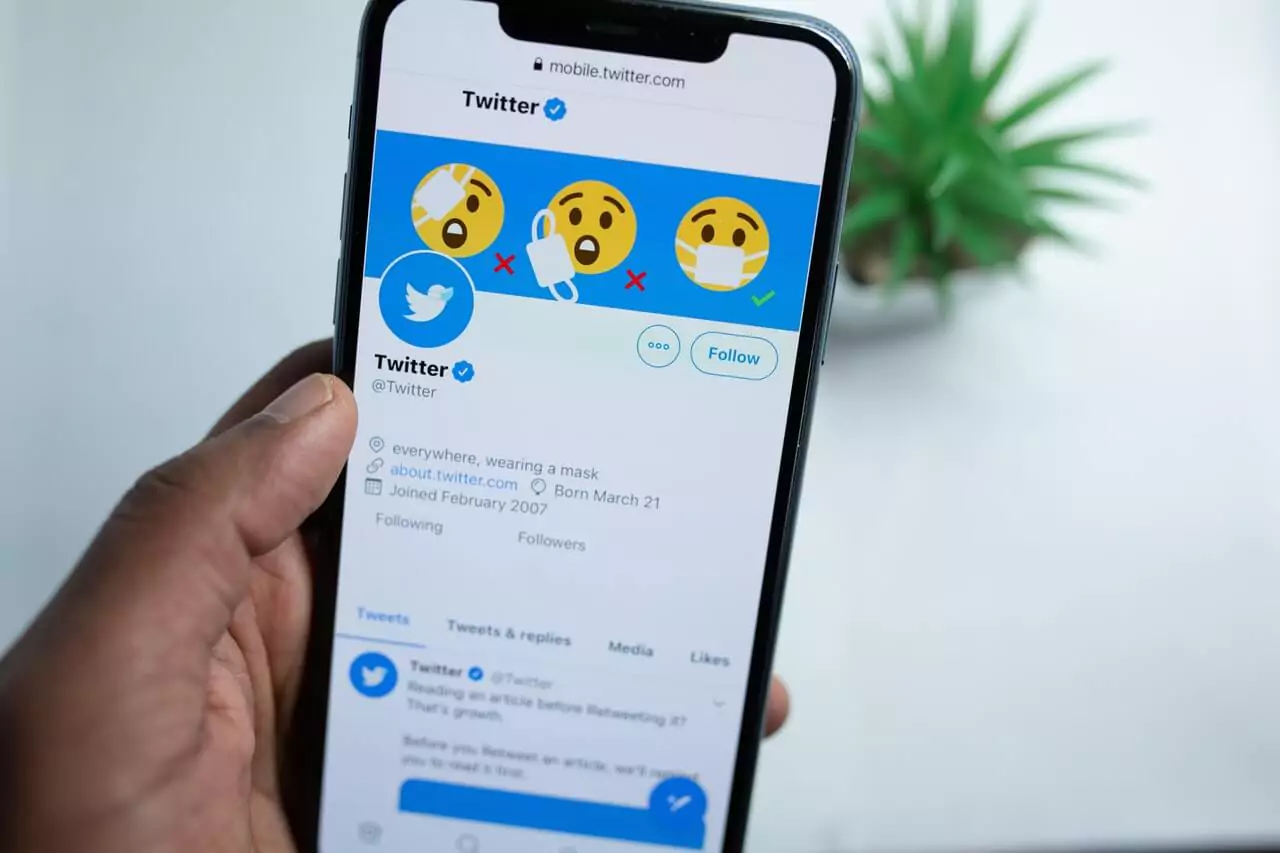Originally published March 14, 2022 , updated on August 9, 2024
As a tech subscription company, social media content writing is probably already a part of your marketing plan. The process may seem simple enough. Right?
But social media content writing is more complex than most people think. Every written piece reflects on your brand. Each sentence has either a positive or negative spin-off for your reach. Consistency in quality, voice, and tone is essential to create credibility with the reader.
According to MarketingProfs, 72% of B2B buyers use information from social media posts as part of their journey to find solutions. You now know the importance of social media post copywriting for your B2B audience. So, let’s discover how your tech subscription company can reach them with optimised post copywriting. Here are our best practices for achieving results on social media.

Find Your Voice and Set the Tone
Strive for consistency in how you communicate. Set the tone for each piece with your voice. Your brand’s voice is professional, but your tone could be happy, positive, discerning, or serious. Your voice comes from your mission statement. The tone is how you convey that mission statement.
Create a Style Guide to Reflect Your Brand’s Voice
Expect different styles if you have several marketers churning out copy for LinkedIn, Facebook, and your website blog. You don’t want a rainbow style. Regain control with a brand style guide for writing before the next copy drive.
Set your goals for each piece of copy and how you want to convey the message. Be sure to include the following aspects in your style guide:
- Mission: Create a brief mission statement to define the core of your business—why do you exist? Tie this in with your social media content writing goals.
- Voice: Do you want to portray a casual, conversational, business-like, or serious voice?
- Tone: You can be professional, authoritative, light-hearted, or helpful.
- Audience: You cannot produce meaningful conversation without knowing your audience. Create buyer personas and personalise the message.
- Brand-preferred spelling: UK or US English? What’s your preferred way of spelling specific industry phrases?
- Social network messages: Set voice, tone and preferred spelling guidelines for each platform.
Does the style guide development seem too challenging? Goodman Lantern’s social media content writing services can help you get started.
Next, let’s look at guidelines for best practices in copywriting for your audience.

Personalise Social Media Content Writing
Obvious, right? But it’s easy to write a reader to sleep with too many “us” and “we” statements. Keep it authentic and inviting. Write like you speak.
The word “you” personalises content. It makes the reader feel included in the conversation. Personalise your voice. ‘Brand speak’ doesn’t resonate well on social platforms, not even LinkedIn. Make it about the reader, even when you share information on how to use your product.
Share information that interests them. As a tech subscription company, your pillar blog focus should be on the upper end of the sales funnel. Not the detailed technical aspects.
Active Keeps Them Awake
Passive voice is dull. Readers hear a humming sound and lose interest when you write in the passive voice. So, avoid it at all costs.
Create Scannable Content
With billions of posts and an information overload, people scan. Especially busy executives and marketers. Help your readers with headings, sub-headings, and bullets.
Shorter Sentences are Better—Sometimes
Shorter sentences are easier to read. Use an app like Hemingway to find readability issues. You want to stick to a 7-8 rating for business writing. The same rating is best for social media content writing.
However, you should vary sentence lengths.
If all the sentences are short, your reader will lose interest.
A medium-length sentence now and then works wonders to keep the reader focussed.
Avoid chunks of text. The world mobile user population has reached the 5.22 billion mark in January 2021. Many of these users access social media pages from their smartphones or tablets. They need more white space and shorter sentences than laptop users.

Create Attention-Grabbing Headlines
According to Buffer, 55% of visitors will spend less than 15 seconds on your article. You need something to hook them. And emotion value headlines get more clicks. But click-bait in B2B writing is a hard no-no.
Does it mean your marketing team should stay away from emotion in headlines? Not at all, unless you don’t mind having your contributions skimmed over in search results. Aim for an emotion value of 20% in B2B social media post copywriting. Use a headline analyser tool to check SEO value.
Write a Brief Introduction
Don’t waste words with lengthy introductions. Chances are, the reader scans the sub-headings instead. A brief introduction gets attention. Follow up with the article’s focus. Now the reader knows if they’ll get answers. Then deliver on what you promise in the introduction.
Avoid Assertive Marketing Messages
Keep your promotional words for adverts. Write about themes of interest to the reader, not your accomplishments.
Don’t Waste—Recycle and Repurpose Content
Add evergreen blog pieces to the marketing mix. Repurpose these for social media platforms. The latest statistics or industry news works for Twitter and LinkedIn, but in-depth insights should form part of the marketing mix. Here’s why:
- Return traffic for years–one well-written piece can be recycled and linked to for years.
- Workload reduction–adding fresh information weekly can become a full-time endeavour. You can rework evergreen blog articles into other formats to free up valuable time.
- Link magnet–getting backlinks takes time. Sites will link to the evergreen articles over time, improving search engine rank as the spin-off.
- High freshness value—you can update the blog to stay current.
Don’t Repeat—Link
Instead of sharing duplicates of the original title of a blog to Facebook or LinkedIn, compose a fresh title and link it to content you’ve shared before.
Cross-posting your blog article in its original format to different channels is little more than echoing the message. Rather, let your team transform the piece into shareable and tweetable snippets with links to the original article.
You can also insert a quote from the original article in an image and publish it on Facebook, Twitter or Instagram. If it’s memorable or insightful, your followers will share or retweet.
Generate enough interest and they’ll visit your original article.
And that’s how to blend your company’s content writing with your social channels.

Create Shareable Content
Determine what your readers share, when they share, and why they prefer specific information. People share content to:
- Add value
- Define their identity
- Connect with others
- Feel important
- Support or drive a cause
Share to Give Something of Value
Create content that solves a problem or entertains. Your readers want to feel they share information that’s useful. The how-to articles, guidelines, lists, and secrets worth knowing fall into this category. For B2B marketing, think of statistics, unusual facts, and newsworthy information that fits your niche.
Share to Define Identity
When someone shares a Facebook, LinkedIn or blog post, they think of how sharing the particular piece reflects on their role. Share statistics and surveys of value if your target audience includes the business executives.
Share to Connect with Others
Facebook, Twitter, LinkedIn, and Instagram are connection points. People want to connect and feel part of a community. Give them information they can share to connect with friends, colleagues, and business partners. Create conversation starters and encourage sharing to get the buzz going.
Share to Support a Cause
Readers champion causes all the time. Find out which causes your audience support and write an opinion post to support it.
Social Media Post Copywriting to Support Value
People want to feel appreciated. They want others to acknowledge their contribution with comments and likes. Shareable content includes showing that you value your readers and appreciate their contributions. If a reader comments on a post, acknowledge their insight.
Understand the Channels
Each network has its own purpose and style. You cannot share the same content across all platforms without adjusting style, length, and focus. Instead of writing one piece and then adapting it to fit all the networks, craft a message for each platform.
Your company doesn’t have to feature on each platform. Know the target audience, and you’ll understand where to find your supporters. Focus on those networks.
First, understand each network. Start with these guidelines below for Facebook, Twitter, Instagram, and LinkedIn.

Post Copywriting for Facebook—Get the Likes and Shares
To get more likes, links, and shares, follow these guidelines for posting to Facebook:
- Vary contribution types. Add videos, images, memes, short press releases, and links to blog posts.
- Posts with videos perform better than text-only—so add a few.
- Transform text content into memes, infographics, and slides or videos.
- Share content on topics related to your industry.
- Don’t use outright promotional CTAs. Facebook’s algorithm is a master at detecting promotional call to action text.
- Punchy headlines attract attention.
- Shorter contributions with a maximum length of 80 characters perform best.
- End discussions with questions to create engagement opportunities.
- Post when your audience is most likely to visit the platform.
- Use hashtags in the middle of posts, but don’t overdo it.

Tweet on Twitter for Engagement
Twitter is the platform for being loud. But you have less space to work with, and you need to engage more often than with Facebook. Use it to create a following and to keep your audience up to date with important events or product changes. Follow these tips for more reach:
- Load important information at the start of the tweet to hook the reader.
- Tweet between 240 and 270 characters at a time (Twitter limits you to 280 characters).
- Create a thread for longer messages.
- Use hashtags, but keep to two for every tweet—use the space to convey the message.
- Fresh content gets loads of retweets—avoid coming in on the tail end of a story.
- Share statistics and news not yet shared anywhere else.
- Let the tweet outline the blog article to which you link instead of sharing the headline as is.
- Insert a URL (linked) after the introduction to get more clicks to your blog post.
- Write concise and clear sentences—if you need to use a fragment, then rewrite the tweet for clarity.
- Emojis might seem out of place in business writing. That said, your tech subscription customers might enjoy a smile or two. Use them to lighten the mood.

Grab Attention on Instagram—Create Show Stopper Captions
Captions interpret images and create higher levels of engagement. Here’s how to deliver content for engagement:
- Add enticing captions of fewer than 125 characters beneath the visuals.
- Limit the full post to 2200 characters.
- Vary hashtag usage. Insert a few hashtags for brand, broad, trending, and industry-specific topics in the caption and first comment section.
- Emojis equal engagement on this platform because you have a younger audience.
- Avoid chunks of text—your audience likes the visuals more than the words.

Let Business Networking Count with LinkedIn
LinkedIn is where your professional audience lives. They enjoy sharing their expertise and expect the same from you.
Follow these social media content writing guidelines to post to LinkedIn:
- Let your content writing skills shine with long-form blog posts. Your readers are more likely to read than scan. And they appreciate well organised and insightful articles.
- Brand your logo and signature to ensure you receive credit when the reader shares the link.
- Add hashtags towards the end of the article or post.
Need Social Media Content Writing Services?
The internet is saturated with repeat messages, and original ideas are rare. To stand out you need original, well-researched articles and posts to spur interest in your products.
Partnering with an agency that understands your business helps for strategy development. Focus on core business growth while the Goodman Lantern team develops your strategy. Our dedicated team works with you to understand your industry and audience. Let us capture your brand message through dedicated social media post copywriting to fuel conversations.
Use our custom services to meet your outreach and blog copywriting needs. Visit our copywriting section to see how we can help.
Key Takeaways
Marketers post millions of blog articles daily. Likewise, social media networks buzz with activity. To stand out, think of how you connect with your audience. Determine what’s important to them and how you can meet their engagement needs.
You’re good to go if you’ve identified the target audience and have a strategy and calendar to keep you on track.
Follow best practices for each platform. Make sure your original blog posts contain shareable content. Most important—consistency and quality top quantity.
Did we miss something? Tell us, and we’ll cover it.
Post Views: 1280


















